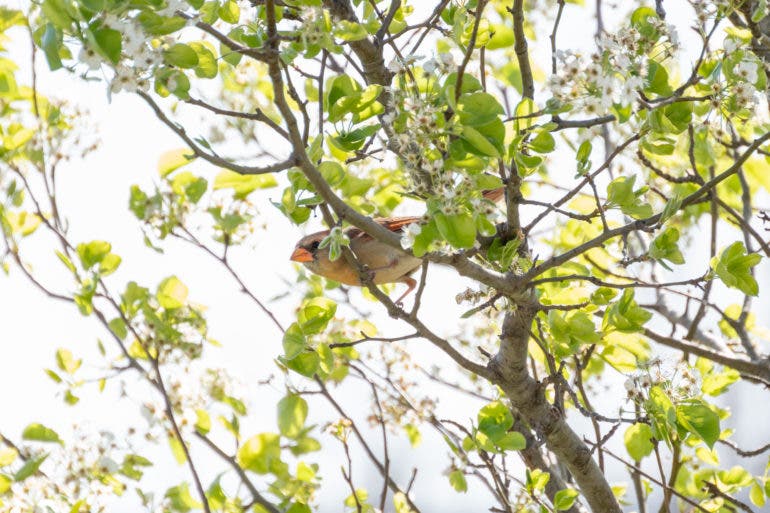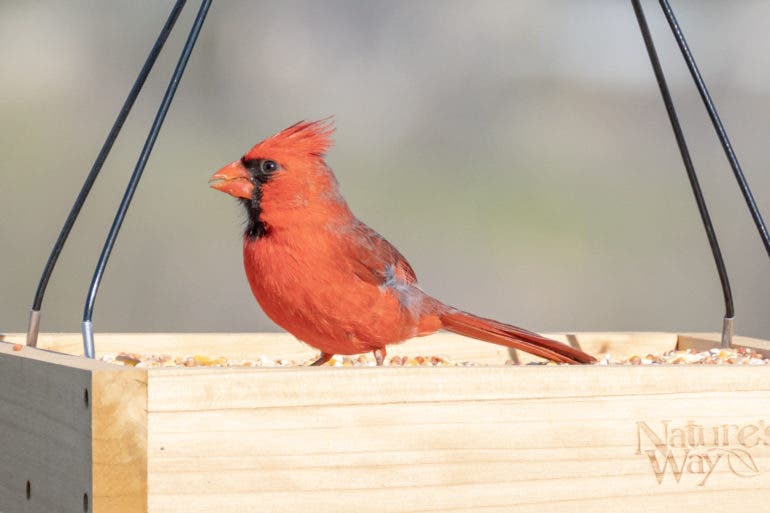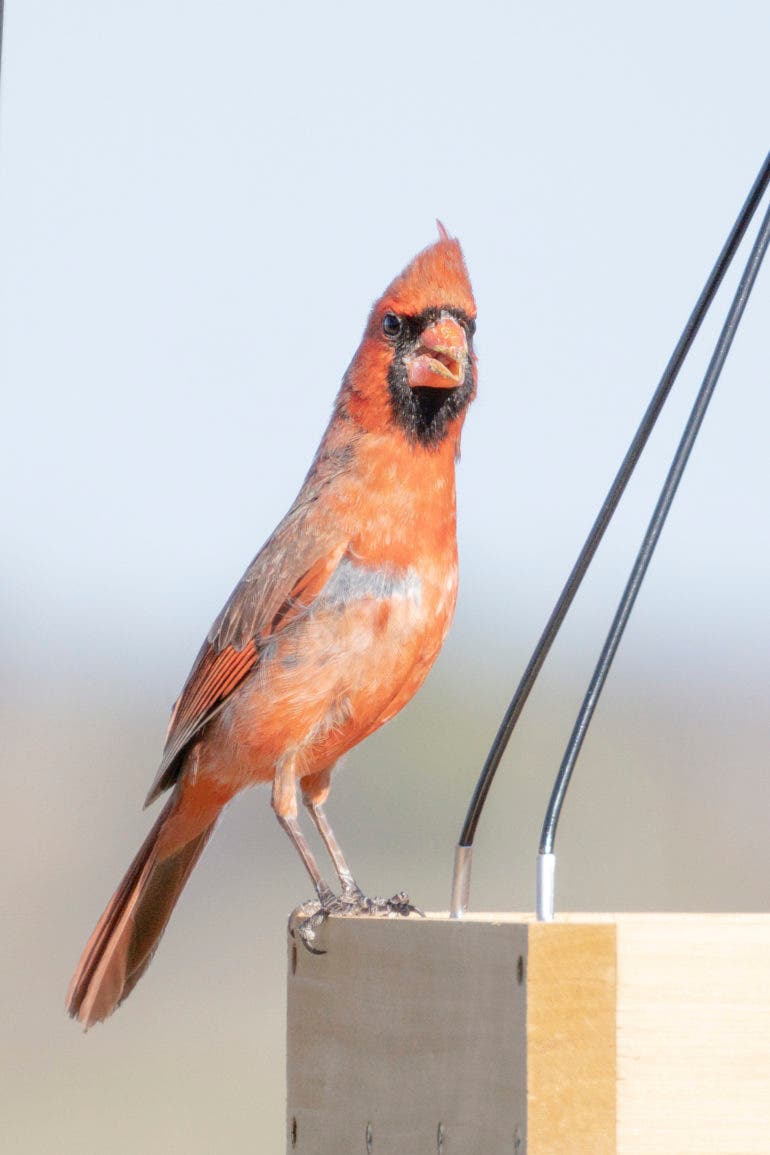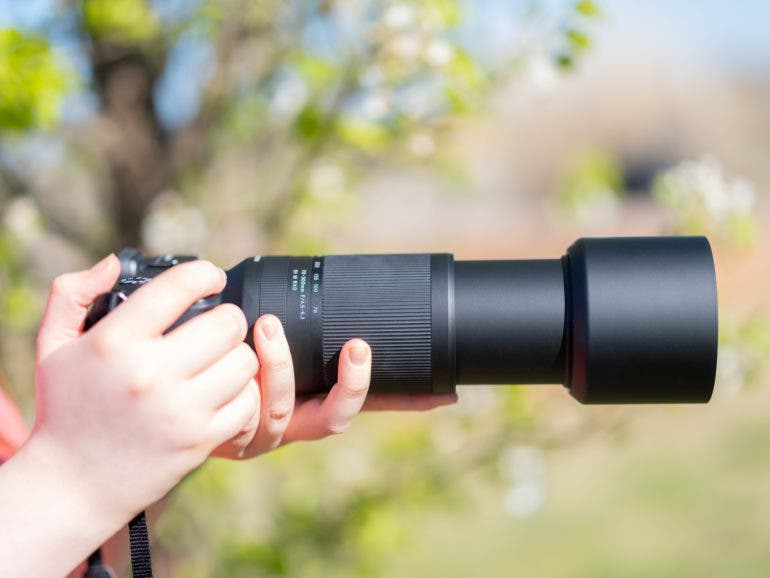This Affordable Setup Makes Backyard Birding Easy and Fun
Backyard birding is more popular than ever, and the Tamron 70-300mm f4.5-6.3 Di III RXD makes it easy to get started.
Backyard birding has become incredibly popular over the last 12 months, thanks to the pandemic. What makes birding so great, though? It’s very relaxing, and it teaches that there’s beauty all around you. You just have to look for it. It’s no surprise that photographers have been clamoring for longer lenses that could help them catch birds in action. Tamron, fortunately, released a lens that everyone could afford just in the nick of time. The Tamron 70-300mm f4.5-6.3 Di III RXD is the world’s smallest and lightest 300mm Sony E mount zoom. When paired with a Sony APS-C camera, it can easily create magic. Find out how this lens can help you capture stunning bird images after the break.

This post is presented by Tamron. Zoom into the world of telephoto photography with the world’s smallest and lightest telephoto zoom lens for Sony E-mount Mirrorless cameras – the Tamron 70-300mm F4.5-6.3 Di III RXD.
The Tamron 70-300mm f4.5-6.3 Di III RXD Is the World’s Smallest and Lightest 300mm E Mount Zoom

When it comes to backyard birding, you’re going to need a lens that gives as much reach as possible. In days gone by, telephoto zooms used to be incredibly expensive. However, Tamron has been making high-quality lenses at affordable prices for a while now. The Tamron 70-300mm f4.5-6.3 Di III RXD is no exception. This lens is small, light, well built, and has high-quality optics that will help you create sharp images. The best part is it costs just $499! Let’s take a look at the specs:
- Optical Construction: 15 elements in 10 groups
- Aperture Blades: 7 (circular diaphragm)
- Minimum Object Distance: 0.8m: (31.5 in) (WIDE) 1.5m (59.1 in) (TELE)
- Maximum Magnification Ratio: 1:9.4 (WIDE) / 1:5.1 (TELE)
- Filter Size: 67mm
- Length: 148mm (5.8 in)
- Weight: 545g (19.2 oz)
- Moisture Resistant Construction: Seals throughout the whole barrel and at the mount
- BBAR: Broad-Band Anti-Reflection Coating
You’re getting a lot for just $499. So, whether you want to use this lens for birding, wildlife, landscape, or more, it will have you covered.
The Tamron 70-300mm f4.5-6.3 Di III RXD Makes Backyard Birding Easy

When paired with a Sony APS-C camera, the Tamron 70-300mm f4.5-6.3 Di III RXD is the perfect setup for backyard birding. This setup is light: I mean, it’s really light. On top of that, Sony’s cameras are excellent when it comes to autofocus performance. The Tamron 70-300mm f4.5-6.3 Di III RXD easily keeps up with all fast focusing modes.

I always recommend that birders use APS-C cameras. Why? Because you gain so much in reach thanks to the crop factor. The Tamron 70-300mm f4.5-6.3 Di III RXD effectively becomes a 105-450mm zoom on Sony crop cameras. It makes capturing small, fast subjects much easier.
How to Capture Birds with the Tamron 70-300mm f4.5-6.3 Di III RXD

The first thing you need to do is find where the birds like to hide and play. You can scout out trees and bushes, or you can draw them out of hiding with some simple bird feeders. Your backyard setup doesn’t have to be anything fancy. Really, all you have to do is fill your birdfeeders with food, and the birds will come.

Once you have that setup, you need to find a place to hide. Sit down on your porch, or stay inside and look through an open window to start out. Then each day, move a little closer to the action. Eventually, the birds will get used to you being around.
Camera Settings for Backyard Birding
Camera settings for backyard birding can vary depending on ambient light. I usually like to have my shutter between 1/1600 and 1/2000th of a second. In great light, this means an ISO of around 800 to 1000 and an aperture of roughly f6.3 to f8. F6.3 is the fastest the Tamron 70-300mm f4.5-6.3 Di III RXD can be at 300mm, so this is perfect.

However, in low light, you’ll have to crank up the ISO. Don’t worry though; modern cameras perform wonders in low light. Have your camera set to continuous focus and either wide or tracking mode. Choose a medium burst mode. High burst modes tend to be less accurate. Use the easy-to-turn zoom ring on the lens to zoom in to 70mm. This will make finding your target easier. Once you’ve found your subject, zoom out to your desired focal length and snap away.
At $499, This Tamron Lens Is a No Brainer for Backyard Birding

If you’re looking to get into backyard birding, the Tamron 70-300mm f4.5-6.3 Di III RXD paired with a Sony a6xxx camera is the way to go. At just $499, the lens is an absolute steal. You’ll be creating sharp backyard birding images with gorgeous colors in no time at all.
This post is presented by Tamron. Zoom into the world of telephoto photography with the world’s smallest and lightest telephoto zoom lens for Sony E-mount Mirrorless cameras – the Tamron 70-300mm F4.5-6.3 Di III RXD.